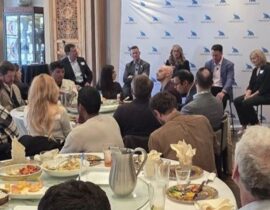Every fall, I see the same pattern repeat: sales leaders start planning for next year, realize they’ll need more pipeline coverage and say:
“Let’s revisit this in January.”
I get it. I did the same thing. Budgets are tight, teams are tired and everyone’s trying to close the year strong. But here’s the truth and I learned it the hard way: if you wait until January to bring on new team members or outsourced sales support, you’re not just losing a quarter. You’re probably losing the first half of your year.
Ramp time is real
New internal team members take the longest to ramp, especially in smaller firms with less management support and technology investment. And outsourced SDRs don’t start producing pipeline the day you sign the contract. There’s onboarding, message alignment, list building, system setup and collaboration with your internal team. Even with a well-run partner, it takes 30–60 days to fully ramp.
If you wait until January to start, that means your team isn’t hitting stride until March…and that’s before you even factor in your own sales cycle.
The math doesn’t lie
If your typical sales cycle is 90 to 120 days, those first opportunities generated in March or April won’t close until late Q2 or even Q3. That means you’ll spend half the year before you see measurable results.
Hiring in Q4 isn’t about getting a head start. It’s about avoiding a late start.
Q1 is for execution, not onboarding
January is when most companies hold their sales kickoffs, launch new plays and roll out territories. It’s the moment when your team aligns around the plan for the year.
If your demand generation team isn’t already trained and in sync, they’ll miss that window and spend Q1 catching up instead of contributing. Wouldn’t it be a nice change to be ahead at the start of the year?
Public sector sellers can’t afford to wait
For teams selling into government or education, fiscal years typically run from October through September. That means active buying happens from fall through mid-summer.
If you wait until spring to ramp your team, you’re entering the slowest part of that cycle, when agencies are focused on execution, not evaluation. By then, your best window has already closed.
Early alignment pays off
Most companies refresh messaging and enablement materials in early Q1. Bringing your outsourced SDR partner onboard in Q4 ensures they’re part of that process: learning alongside your internal team and ready to hit the ground running once the new campaigns drop.
Less noise, better conversations
December often gets written off as “quiet time,” but it’s one of the most productive periods for outbound. Decision-makers are planning budgets, researching vendors and setting priorities. Inbox volume is lower and conversations tend to be more strategic.
When your competitors go dark, your team can stand out. While not everyone is working, those that do are more reachable and open to conversations.
Partner momentum starts now
If your go-to-market motion involves partners, remember that most joint campaigns and MDF allocations get locked in during Q4. Having your outsourced SDRs already operational means they can activate those plays as soon as they launch, rather than waiting another quarter to participate.
Talent moves fast in January
January is peak demand season for SDR talent. Everyone’s staffing up at once. Engaging early gives you first pick of talent, start dates and team configurations. Waiting just limits your options.
You can start small and scale fast
Engaging outsourced sales support doesn’t have to mean a huge commitment. Start with a small team, prove the motion, then scale once you see results. What matters is getting the engine in motion now, not in Q2.
Don’t lose half your year
If you need pipeline in Q1, you have to build it in Q4. Waiting until January doesn’t delay the start of the work…it delays the start of your results.
Start now. Train now. Build now. So when the new year hits, your team is already running -not warming up.




